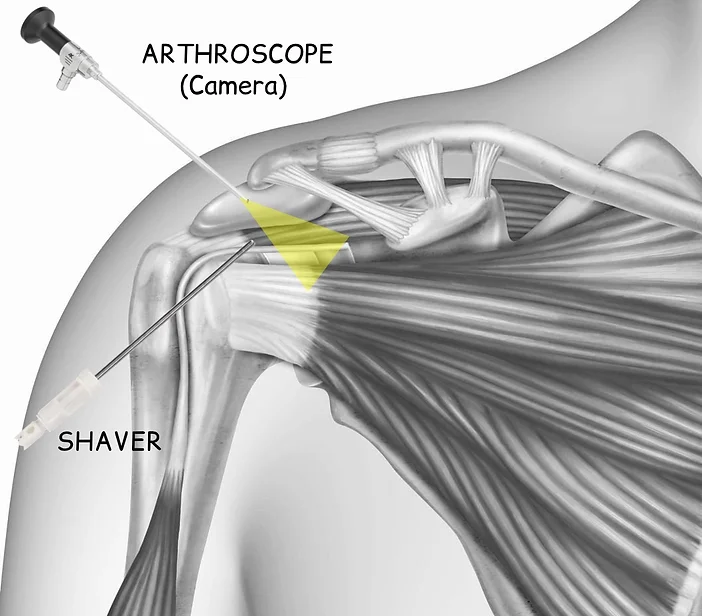Shoulder Scope Surgery

Shoulder Scope Procedure and Aftercare
Minimally Invasive procedure
A shoulder scope procedure involves several small cuts placed around the shoulder to allow the surgeon to perform repairs and reconstructions in the shoulder. Each cut typically measures 0.5cm to 0.8cm. This is know as a Key-Hole procedure. Such a procedure has minimal “down-time”, ensures much faster recovery and return to lifestyle.
At Centurion, shoulder scope surgery can be used to treat the following conditions:
1) Rotater Cuff tears (tendon tears)
2) Dislocation injuries (labrum tears, Bankart, Hill-Sachs)
3) Frozen shoulder
4) Impingement problems
5) Calcific tendinitis (abnormal calcium deposit)
6) Acromio-clavicular arthritis or dislocations
7) Biceps problems
Before procedure, depending on your health status, you may be required to undergo blood tests, chest Xray, and an ECG to ensure your fitness for treatment. However, blood loss from the actual procedure itself is usually very minimal.

Shoulder Arthroscopic Procedure
On the day of procedure, you will admit to the designated hospital at least 2 hours before the procedure time. The length of the procedure depends on your condition being treated.
After procedure, your arm will be put in an armsling to rest the shoulder and there will be a waterproof dressing on the shoulder, so you can shower.
Most patients stay 1 night in hospital for pain management. The next day, you can and should start performing pendular exercises to keep the shoulder flexible. You will be instructed on the appropriate exercises and the actions you can and cannot do.
After procedure
Depending on your condition, you may be using the armsling for 2 to 6 weeks. For some conditions, we recommend wearing when sleeping for the initial period. You should do the pendular exercises at least twice daily, and apply cold compress to your shoulder using a gel pack or simply a cold towel.
For most conditions that we treat with a shoulder scope, you will require physiotherapy to help you regain motion and strength of the shoulder, especially for frozen shoulder. Physiotherapy may commence 2 weeks after surgery and be weekly or fortnightly, and may last till 3 months after the procedure depending on the condition.
Driving after shoulder scope procedure
Return to driving is variable, but we do recommend that you should have reasonable range of movement without pain in order to drive with both hands, and this is typically 4 to 6 weeks after surgery.
Time away from work and sports
Time away from work is highly variable and depends on each patient’s work requirement. Being an upper limb treatment, some of our patients have gone back to the office in an armsling within a few days.
Again, time away from sports is highly variable and dependant on the condition being treated. For a shoulder dislocation injury, this may be 3 to 4 months.

Services
Medisave / Insurances
Treatments
Ankle Sprain & Treatment
Cartilage Repair Treatment
Bone Fracture Treatment
Alternatives to Knee Replacement
Knee Replacement Surgery
ACL Reconstruction Surgery
Knee Cartilage/Meniscus Tear Injury
Heel Spur Treatment
Hip Replacement Surgery
Hip Scope Surgery
Shoulder Scope Surgery
Ankle Ligament Surgery
Spinal Injection Therapy
Steroid Injection
Patient Resources


